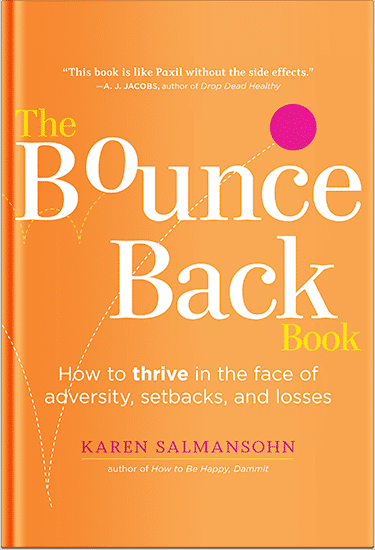 Crises are inevitable in running a business, but how an organization responds can make or break its reputation. Effective communication during these moments is crucial, yet many companies struggle to manage the narrative when challenges arise. This is where proactive and reactive crisis communication strategies come into play.
Crises are inevitable in running a business, but how an organization responds can make or break its reputation. Effective communication during these moments is crucial, yet many companies struggle to manage the narrative when challenges arise. This is where proactive and reactive crisis communication strategies come into play.
This article explores the secrets to mastering both approaches and building a strong crisis communication plan that ensures preparedness and resilience.
Why Crisis Communication Planning Matters
When a crisis strikes, emotions run high, and the pressure to respond quickly is immense. In such moments, communication is the lifeline between an organization and its stakeholders, employees, and the public.
Businesses with robust crisis communication plans tend to recover faster and retain more trust compared to those that respond on the fly. For example, companies that address data breaches promptly and transparently often face fewer legal and reputational damages. Without a plan, the risk of misinformation, public backlash, and prolonged damage increases significantly.
Effective crisis communication planning isn’t just a safeguard; it’s a proactive way to maintain credibility and minimize disruptions when the unexpected happens.
Leveraging Professional Expertise in Crisis Communication
While a solid crisis communication plan is essential, consulting with experienced professionals can further strengthen your strategy. Partnering with a crisis communications agency provides access to experts who offer valuable insights, assist with messaging, and deliver training to prepare your team for high-pressure situations.
These professionals can also help navigate complex crises involving legal or reputational risks, ensuring clarity and compliance. Whether refining existing plans or building new ones, their guidance enhances readiness and reinforces trust with stakeholders.
Proactive Crisis Communication Planning
Proactive communication planning focuses on preparation and foresight. It ensures an organization is ready to handle a crisis before it begins.
What Proactive Planning Involves
Proactive strategies include identifying potential risks, forming a crisis communication team, and regularly testing protocols. These measures ensure that when a crisis occurs, solutions are not scrambled.
This approach also involves creating pre-written templates for common crisis scenarios, such as product recalls, service disruptions, or public complaints. These templates save valuable time and help maintain consistency. Additionally, proactive organizations train spokespersons to deliver clear and confident messages during high-pressure situations.
Benefits of Proactive Planning
Organizations that plan gain significant advantages. They can respond more quickly, maintain control of the narrative, and demonstrate reliability to their stakeholders. Monitoring tools, such as social media trackers or industry trend alerts, also help identify potential crises early, allowing businesses to address issues before they escalate.
For instance, responding swiftly to a negative online review can prevent it from becoming a more significant reputational issue.
Reactive Crisis Communication
Reactive communication focuses on addressing crises after they occur. While it’s necessary for unpredictable situations, it carries inherent risks.
What Reactive Planning Looks Like
Reactive strategies typically include issuing public statements, responding to media inquiries, or holding press conferences. They rely heavily on quick decision-making and improvisation. While these strategies can help manage immediate concerns, they often lack the structure and clarity of proactive measures.
Challenges of Being Reactive
Organizations that rely solely on reactive communication often find themselves at a disadvantage. Limited time to assess a situation can lead to errors in messaging or inconsistent actions. Stakeholders may perceive the response as unprepared or insincere, harming long-term trust.
Key Differences Between Proactive and Reactive Approaches
While proactive and reactive approaches share the goal of addressing crises, their methods and outcomes differ significantly. Proactive planning emphasizes preparation, allowing organizations to act quickly and confidently during crises. Reactive strategies, on the other hand, focus on damage control, often under tight deadlines and high-pressure conditions.
A proactive approach builds trust over time by demonstrating foresight and responsibility, while reactive responses may repair immediate damage but lack the same long-term impact. Both approaches have their place, but integrating them ensures a balanced and effective strategy.
Building an Effective Crisis Communication Plan
To create a robust plan, it’s essential to blend proactive preparation with reactive flexibility. Here’s how to get started:
- Assess Risks and Anticipate Scenarios: Identify potential risks specific to your industry. For example, a financial institution might prioritize cybersecurity threats, while a retail company may focus on supply chain issues.
- Establish Clear Communication Channels: Designate team members responsible for managing communication during a crisis. Ensure that everyone understands their roles and knows how to use communication tools effectively.
- Train Your Team: Crisis communication requires confidence and clarity. Regular training ensures that spokespersons, social media managers, and other key players are prepared to handle high-pressure situations.
- Test and Refine Your Plan: Conducting regular simulations helps identify gaps and weaknesses in your plan. Use these drills as opportunities to refine your strategies and improve team readiness.
Secrets to Success in Crisis Communication
Mastering crisis communication requires a thoughtful approach and consistent execution. Here are some key tips:
- Consistency Is Key: Ensure your messaging aligns across all platforms, from social media to press releases, to avoid confusion or mixed signals.
- Show Empathy and Transparency: Crises affect people, not just organizations. Acknowledge concerns and be honest about your actions to resolve the issue. Trust is built on transparency.
- Leverage Technology: Tools like monitoring social media and automated alerts can help you avoid and manage potential crises.
- Learn From Each Crisis: Every crisis offers valuable lessons. Analyze your response, identify areas for improvement, and update your plan accordingly.
Takeaway
Crisis communication planning is not just a defensive measure—it’s a proactive investment in your organization’s reputation and resilience. By understanding the strengths of proactive planning and the necessity of reactive strategies, you can build a balanced approach that ensures your business is prepared for any challenge. Start planning today because preparation is the ultimate key to success in moments of crisis.
P.S. Before you zip off to your next Internet pit stop, check out these 2 game changers below - that could dramatically upscale your life.
1. Check Out My Book On Enjoying A Well-Lived Life: It’s called "Your To Die For Life: How to Maximize Joy and Minimize Regret Before Your Time Runs Out." Think of it as your life’s manual to cranking up the volume on joy, meaning, and connection. Learn more here.
2. Life Review Therapy - What if you could get a clear picture of where you are versus where you want to be, and find out exactly why you’re not there yet? That’s what Life Review Therapy is all about.. If you’re serious about transforming your life, let’s talk. Learn more HERE.
Think happier. Think calmer.
Think about subscribing for free weekly tools here.
No SPAM, ever! Read the Privacy Policy for more information.
One last step!
Please go to your inbox and click the confirmation link we just emailed you so you can start to get your free weekly NotSalmon Happiness Tools! Plus, you’ll immediately receive a chunklette of Karen’s bestselling Bounce Back Book!


 Crises are inevitable in running a business, but how an organization responds can make or break its reputation. Effective communication during these moments is crucial, yet many companies struggle to
Crises are inevitable in running a business, but how an organization responds can make or break its reputation. Effective communication during these moments is crucial, yet many companies struggle to 